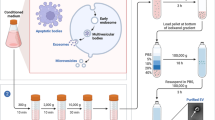Abstract
Fetal wounds have been found to have increased levels of high-molecular-weight hyaluronan (HMW-HA) compared with those of adults. The primary enzyme responsible for producing HMW-HA is hyaluronic acid synthase-1 (HAS-1). We hypothesized that over-expression of HAS-1 in adult dermal wounds would decrease inflammation and promote regenerative healing. To test this hypothesis, the flanks of adult C57Bl/6 mice were treated with a lentiviral construct containing either HAS-1-GFP or GFP transgenes. After 48 h, a 4-mm excisional wound was made at the site of treatment. Wounds were harvested at days 3, 7, or 28 after wounding. Wound phenotype was assessed by histology to examine tissue architecture and immunohistochemistry for CD45. At 7 and 28 days, lenti-HAS-1-treated wounds demonstrated the restoration of the normal dermal elements and organized collagen fiber orientation. In contrast, the lenti-GFP-treated wounds lacked normal dermal architecture and demonstrated a disorganized collagen scar. At 3 and 7 days, wounds treated with lenti-HAS-1 exhibited a significant decrease in the number of inflammatory cells when compared with wounds treated with lenti-GFP. Thus, HAS-1 over-expression promotes dermal regeneration, in part by decreasing the inflammatory response and by recapitulation of fetal extracellular matrix HMW-HA content.







Similar content being viewed by others
Abbreviations
- ECM:
-
Extracellular matrix
- HMW-HA:
-
High-molecular-weight hyaluronon
- HA:
-
Hyaluronon (hyaluronic acid)
- HAS:
-
Hyaluronic acid synthase
- LMW-HA:
-
Low-molecular-weight hyaluronon
- ROS:
-
Reactive oxygen species
References
Adzick NS, Harrison MR, Glick PL, Beckstead JH, Villa RL, Scheuenstuhl H, Goodson WH 3rd (1985) Comparison of fetal, newborn, and adult wound healing by histologic, enzyme-histochemical, and hydroxyproline determinations. J Pediatr Surg 20:315–319
Burrington J (1971) Wound healing in the fetal lamb. J Pediatr Surg 6:523–528
Chen WY, Abatangelo G (1999) Functions of hyaluronan in wound repair. Wound Rep Reg 7:79–89
Day AJ, Motte CA de la (2005) Hyaluronan cross-linking: a protective mechanism in inflammation. Trends Immunol 26:637–643
Dubay DA, Franz MG (2003) Acute wound healing: the biology of acute wound failure. Surg Clin N Am 83:463–481
Girish KS, Kemparaju K (2007) The magic glue hyaluronan and its eraser hyaluronidase: a biological overview. Life Sci 80:1921–1943
Iocono JA, Ehrlich HP, Keefer KA, Krummel TM (1998) Hyaluronan induces scarless repair in mouse limb organ culture. J Pediatr Surg 33:564–567
Itano N, Sawai T, Yoshida M, Lenas P, Yamada Y, Imagawa M, Shinomura T, Hamaguchi M, Yoshida Y, Ohnuki Y, Miyauchi S, Spicer AP, McDonald JA, Kimata K (1999) Three isoforms of mammalian hyaluronan synthases have distinct enzymatic properties. J Biol Chem 274:25085–25092
Juhlin L (1997) Hyaluronan in skin. J Intern Med 242:61–66
Kobayashi H, Terao T (1997) Hyaluronic aicd-specific regulation of cytokines by human uterine fibroblasts. Am J Physiol 276:C1151–C1159
Krummel TM, Nelson JM, Diegelmann RF, Lindblad WJ, Salzberg AM, Greenfield LJ, Cohen IK (1987) Fetal response to injury in the rabbit. J Pediatr Surg 22:640–644
Laurent C, Hellström S, Stenfors LE (1986) Hyaluronic acid reduces connective tissue formation in middle ears filled with absorbable gelatin sponge: an experimental study. Am J Otolaryngol 7:181–186
Longaker MT, Adzick NS, Hall JL, Stair SE, Crombleholme TM, Duncan BW, Bradley SM, Harrison MR, Stern R (1990) Studies in fetal wound healing. VII. Fetal wound healing may be modulated by hyaluronic acid stimulating activity in amniotic fluid. J Pediatr Surg 25:430–433
McKee CM, Penno MB, Cowman M, Burdick MD, Strieter RM, Bao C, Noble PW (1996) Hyaluronan (HA) fragments induce chemokine gene expression in alveolar macrophages. The role of HA size and CD44. J Clin Invest 98:2403–2413
Noble PW (2002) Hyaluronan and its catabolic products in tissue injury and repair. Matrix Biol 21:25–29
Peranteau W, Zhang L, Muvarak N, Badillo A, Radu A, Zoltick PW, Liechty KW (2008) IL-10 overexpression decreases inflammatory mediators and promotes regenerative healing in an adult model of scar formation. J Invest Dermatol 128:1852–1860
Sena-Esteves M, Tebbets JC, Steffens S, Crombleholme T, Flake AW (2004) Optimized large scale production of high titer lentivirus vector pseudotypes. J Virol Methods 122:131–139
Slavkovsky R, Kohlerova R, Jiroutova A, Hajzlerova M, Sobotka L, Cermakova E, Kanta J (2010) Effects of hyaluronan and iodine on wound contraction and granulation tissue formation in rat skin wounds. Clin Exp Dermatol 35:373–379
Tammi R, Pasonen-Seppänen S, Kolehmainen E, Tammi M (2005) Hyaluronan synthase induction and hyaluronan accumulation in mouse epidermis following skin injury. J Invest Dermatol 124:898–905
Zennou V, Serguera C, Sarkis C, Colin P, Perret E, Mallet J, Charneau P (2001) The HIV-1 DNA flap stimulates HIV vector-mediated cell transduction in the brain. Nat Biotechnol 19:446
Acknowledgments
The authors thank Phillip W. Zoltick, who provided the lentiviral vectors used in this study.
Author information
Authors and Affiliations
Corresponding author
Additional information
This work was supported by a Basil O’Connor Starter Scholar Research Award from the March of Dimes Research Foundation and the Franklin Martin Faculty Research Fellowship from the American College of Surgeons.
Rights and permissions
About this article
Cite this article
Caskey, R.C., Allukian, M., Lind, R.C. et al. Lentiviral-mediated over-expression of hyaluronan synthase-1 (HAS-1) decreases the cellular inflammatory response and results in regenerative wound repair. Cell Tissue Res 351, 117–125 (2013). https://doi.org/10.1007/s00441-012-1504-7
Received:
Accepted:
Published:
Issue Date:
DOI: https://doi.org/10.1007/s00441-012-1504-7




